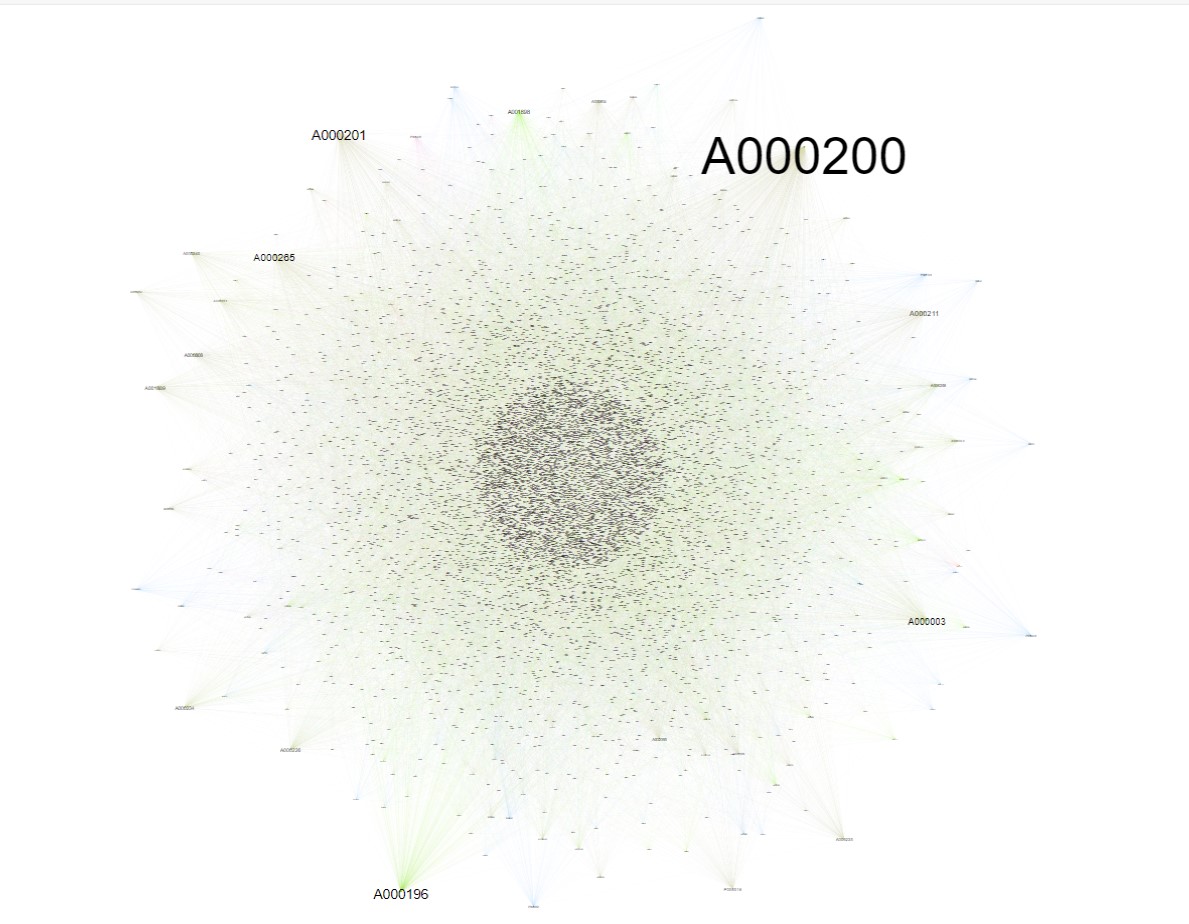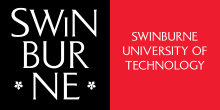Edition: 2025 May (Gwangal moronn - Gariwerd calendar - Autumn: late March to end of May - season of honey bees)
Reference: http://www.bom.gov.au/iwk/calendars/gariwerd.shtml#gwangal-moronn
Publisher: Swinburne University of Technology
- Find People [ Find people born 100 years ago ]
- Find Organisations and groups [ Find entities founded 100 years ago ]
- Find Archival and manuscript collections
- Find Publications (offline and online)
- Find Awards, prizes and medals
- Find Innovations, inventions and significant cultural objects
- Find major Events and expeditions
- Find major Journals
- See entries grouped by Tag, for example: occupation or function
- See latest news and announcements
- Search (using Google Custom Search) e.g. name of organisation, person, phrase or word
Featured in the edition:
Resources for the History of Australian Science and Innovation
- Browse Archival Resource Indexes A-Z [2025 May edition: total 3,051 entries.]
- Browse Bibliographic Indexes A-Z [2025 May edition: total 27,840 entries.]
- Latest Annual Bibliography [no. 45 2023/24], published in Historical Records of Australian Science, 2025 - download the pdf for free
- Featured Publication: CSIRO research for Australia: Commonwealth Scientific and Industrial Research Organization (1962) is a 65 page booklet, now available online, providing an historical overview of the work of CSIR and CSIRO up to 1962. All organisations and people mentioned in the text are linked to their entries in the Encyclopedia.
Scientists, Organisations, Innovations and featured entries
- Browse Entity Indexes A-Z [2025 May edition: total 9,988 entries.]
- Endersby, Ian D. (1941 - 2024): was an entomologist whose research focussed on dragonflies (Odonata). He worked in particular on their identification and nomenclature. With Günther Theischinger, he published analyses of the research of Robin Tillyard. Other research was on the endangered Elthem Copper Butterfly. Endersby was involved in a wide range of natural history organisations and issues. He was instrumental in the creation of a reserve for the protection of the Caggage Tree Palm in Gippsland.
- Lowrie, Allen James (1948 - 2021): was a world authority on carnivorous plants. He had a varied career was in advertising, steel fabrication, geology in the Pilbara region, and the construction of below-ground swimming pools, before retiring in 1987 to focus full-time on his long-time interest in botany. In this he was ably assisted by his wife Pauline. Lowrie concentrated on the Australian carnivorous plants, being particularly interested in Drosera and Byblis.
- Kett, William George (1887 - 1962): was an optometrist who for most of his career worked at the Mark Foy Department Store in Sydney. As a practitioner he advocated split lamp biomicroscopy and gonioscopy long before they became common practice. Kett played a key role in the establishment of the Australian Optometrical Association. One of his main concerns was the proper training of optometrists as a requirement for registration, and uniform standards of training across Australia.
- Houghton, Sheila (1928 - 2014): became a Member of the Field Naturalists' Club of Victoria in 1972 and for the next 42 years was a central figure in the life of the Club. She held office in a number of capacities including Member of Council and Vice President. When the Club acquired its own premises, Houghton, as a member of the Property Committee, was a driving force in the refitting of the building. In 1996 Houghton was made an Honorary Life Member of the Club, while her contribution to the Club's library and archives was acknowledged in 2010 with the naming of the Sheila Houghton Library and Archive.
- Christie, Maureen Heather: is widely acknowledged as an expert in shorebirds. Since her career as a bookkeeper ended with her retirement in 1994, Christie has devoted much of her time to bird organisations. These included the Australasian and Victorian Wader Study Groups, Friends of Shorebirds SE Inc. (FoSSE), and BirdLife Australia. Besides holding office on the committees of these organisations. In particular she is concerned with migratory shorebirds, notably the Ruddy Turnstone and Sanderling, along the East Asian-Australian Flyway from Siberia to Australia. The work she has done with colleagues has highlighted the importance of tidal flats in these migrations. Among the awards Christie has received are the Serventy Conservation Medal and the Australian Natural History Medallion.
- Wildlife Preservation Society of Australia (1909 - ): was founded in 1909. Since it's inception it has a vocal advocate for the preservation and conservation of Australia's native flora and fauna. It has campaigned for legislative protection of Australian species, the establishment of national parks and reserves; and the recognition of potential dangers from exotic organisms. Co-operation with similar organisations has been a high priority. The Society's journal, Australian wild life was first published in 1934, and until 1966 included the Society's annual report (later published separately).
- The Western Australian naturalist (1947 - ): has been published by the Western Australian Naturalists Club since 1947. It was intended to provide a way for Club members to publish original work that contributed to knowledge of the indigenous flora and fauna. Stimulating interest in natural history was a further stated aim. Originally issued irregularly, it is now published quarterly.
- H.M.S. Mermaid (1816 - 1829): was a cutter built in Howrah, India, in 1816 and purchased by the Royal Navy at Port Jackson in 1817. Between December 1817 and 1820 she was commanded by Phillip Parker King on three surveying voyages around the coast of the Australian mainland, including the inner route of the Great Barrier Reef. On all three voyages King was accompanied by botanist Allan Cunningham and Bungaree, an Aboriginal man who had been of material assistance to Matthew Flinders during his surveys.
- Philosophical Society of Australasia (1821 - 1822): was founded in June 1821, with the object of investigating various branches of science (including mineralogy and geology) relating to Australia and adjacent regions. The exchange of books and formation of a museum were also stated intentions. This was the first attempt to create such a society in Australia. It survived for a little over one year. Those who attended the first meeting in June 1821 were: James Bowman, Henry Douglass, Barron Field, Frederick Goulburn, Francis Irvine and Edward Wollstonecraft. Incoming Governor Thomas Brisbane became President in November 1821. Other members included: John Oxley (joined at the second meeting), Partick Hill, William Howe, Alexander Berry, Donald Macleod, Christian Rümker and Phillip Parker King.
- National Science Centre (1967 - 1992):In the early 1960s the idea was conceived within the CSIRO, of a central building in Melbourne - a National Science Centre - which would house scientific, technological and learned societies at a reasonable rental. It was envisaged that the Centre would provide the opportunity for the interchange of ideas and a furtherance of knowledge. The purpose built National Science Centre, also known as Clunies Ross House, at 191 Royal Parade, Parkville was completed in 1967. Funds were successfully raised to build the centre, and when opened, the building was free of debt. It was managed by a Board of Governors, and provided rental accommodation for the many societies, together with shared meeting rooms, modern lecture theatres and a catered social centre 'The Sciences Club' where the members of various societies could meet in an informal manner and where functions could be held.
Introduction:
The Encyclopedia of Australian Science and Innovation is a register of the people, industries, corporations, research institutions, scientific societies, awards, major events and other organisations that have contributed to Australia's scientific, technological, engineering and medical research heritage - the engine of innovation in this country. Each entry has references to their archival materials, museum objects and collections, and to bibliographic resources, including historical and current literature. Read more
Research, curation and web publication is supported by the Swinburne University of Technology, Office of the Chief Scientist. Web publication is by serial editions with at least four editions per year. Each edition contains new entries and articles as well as amendments and additions to existing entries.
The Encyclopedia acknowledges all Aboriginal and Torres Strait peoples of Australia, the traditional custodians of Country. It recognises and supports their connections to land, sea and community. We pay our respect to their elders and leaders past and present, and extend that respect to all First Nations people of the world. We are incrementally building a gateway to sources documenting Australian First Nations' knowledge: see Theme: Australian First Nations.
We aim to be a 'living archive' and strive to represent all knowledge in an honest and respectful manner.
On 24 November 2022 (5.45pm), the Centre for Transformative Innovation at Swinburne University of Technology hosted an event at the Hawthorn Campus to celebrate the next phase in the life of the Encyclopedia. For more information see Launch 2022
Editor-in-chief: Adjunct Associate Professor Gavan McCarthyExhibitions - selected stories explored in more depth
Other useful resources
- Historical Records of Australian Science, Australian Academy of Science and CSIRO Publishing. The history of science, pure and applied, in Australia, New Zealand and the southwest Pacific.
- Trove , National Library of Australia. Australia’s free online research portal. Trove is a collaboration between the NLA and hundreds of Partner organisations around Australia, including this Encyclopedia.
- History of Australian science, Australian Academy of Science. An introduction to the historical resources of the Academy.
- CSIROpedia, CSIRO and Swinburne University of Technology. Innovation shaping Australia and the world since 1916.
- IsisCB Explore, An open access discovery service from the History of Science Society; built on 50-years of data in the Isis Bibliography of the History of Science.
- Biodiversity Heritage Library improves research methodology by collaboratively making biodiversity literature openly available to the world as part of a global biodiversity community. An advanced subject search of "Australia" is good starting point.
- Guide to Australian Business Records Archive Edition 2025.This guide provides links to archival and published resources relating to Australian business entities and people involved with those entities.
Data Overview
In all, there are well over 2.3 million data elements captured in 44 data tables. The data can be made available in postgresql format and json-ld courtesy of project with the Australian Research Data Commons.
If you would like to explore the network graph of the links between entities, shown below, go to the SVG view of the data for this edition. Hint: use the sliders to locate the graph - it is large. Also, you can use "Find in the Page" to find Entity ID numbers and use the Zoom function to move in and out. For example: A000200 is the node for the Australian Academy of Science.


